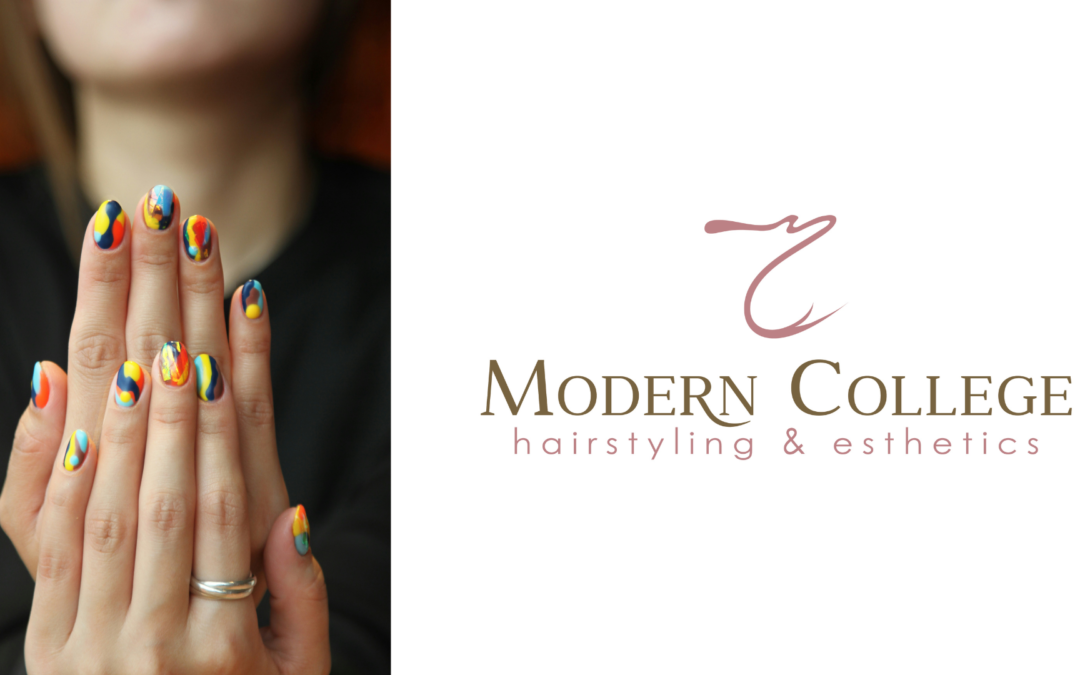If you’ve been out for a manicure recently, you’ve probably been presented with a choice: acrylic nails or gel nails. Unless you’ve had them done before, or had specific training about each procedure, it probably isn’t clear what the differences are between the two of them.
At the top level, both acrylic and gel nails are customizable, can last for several weeks, remain chip free, and give your nails the look you want. However, there are enough differences between the two that you might find yourself opting for one type over the other.
In the following post, we take a closer look at the processes that go into each type of extension and highlight some of the not-so-obvious differences between the two.
What are nail extensions?
I suppose before we go into the different types of extensions, it might not hurt to talk about nail extensions in general – and there’s no shame if you’ve never had one done before, or aren’t even sure where to begin.
Generally speaking, nail extensions are any treatment that gives additional length and layer to a person’s fingernails. They’re typically customizable, letting you have a say in the shape, size, and colour, and usually last a few weeks at a time after they’ve been applied
Nail extensions are one of the more popular esthetic treatments that people go for at spas and parlours – and can be a big step up from regular polish. More often than not, you’ll find people getting their nails ready whenever they have a special occasion on the way, such as a wedding, anniversary, or even a vacation lined up.
The two most common routes for this sort of treatment would be using acrylic extensions or hard gel enhancements. Both are set and dried on your natural nail – which is still underneath, but it’s the extension that people will see.
What are the differences between acrylic nails and gel nails?

Acrylic nails are pretty much the default solution for sturdy nail extensions. The extension is applied directly to the nail using a brush where it is shaped to the desired length and thickness.
To harden the extensions, they go through a process called “polymerization.” What that means in simpler terms is that the molecules that make up the application bind together and become stronger after being applied and dried out. This is what lets them hold up to daily wear and tear without immediately chipping..
After the acrylic is fully set and dried, it is then filed down, buffed, and polished. This gives each nail a smooth and finished look, with added density.
Gel nails, on the other hand, use a slightly different formula than your regular acrylic extension. As the name suggests, they come from a gel-like substance that is much softer and easily sculpted.
Gel nails also come pre-mixed, while acrylic gathers the mixing during the application process, and needs to be dried using a UV light or LED lamp. Sometimes it takes two or three successive layers of application and hardening before you achieve the result you wanted.
These kinds of extensions are typically glossier in appearance than acrylic. They also tend to be a bit more flexible, if a little less dense than acrylic names. They’re also usually much easier to remove afterwards as well.
Which are better, acrylic nails or gel nails?
Neither one is inherently “better” than the other. However, that doesn’t mean that a lot of people and even specialists who apply these extensions don’t have their preferences.
Below, we’ve outlined some of the general pros and cons of each. Neither is perfect, but neither is a clear winner for every woman’s nails either.
Pros of Acrylic nails
- Durability: Acrylic nails are known for their resistance to breaking and chip damage.
- Ease of Maintenance: Acrylic nails typically require fewer fills than gel nails, and last longer the moment you walk out of the parlour.
- Versatility: Acrylic nails can be customized into all kinds of shapes, lengths, colours, and sizes depending on your style.
Cons of Acryllic nails
- Appearance: Some people find that acrylic nails look less natural than, well, your natural nails or even gel nails.
- Time to dry: Acrylic nails almost always take much longer to harden and get ready than their gel counterparts.
Pros of Gel nails:
- Appearance: Gel nails typically look more like natural nails than their acrylic counterparts, if that is the look you are going for.
- Flexibility: These nails offer a balance of durability and flexibility, and tend to feel much more flexible on your fingertips too.
- Quick curing time: Gel nails only take a short period of time to become dried / cured under a UV lamp.
Cons of Gel Nails
- Removal: Gel nails need to be soaked in acetone to be easily removed, and this takes time as well as opening the door to temporary damage to your natural nails.
- Lifting: When not properly set, gel nails sometimes lift, leading to gaps where water or dirt can get in.
Are wearing or removing extensions bad for your nails?
If you’ve ever gone for extensions, there’s a good chance you’ve had someone warn you about them being bad for your nails. Make no mistake, while nail extensions are generally fine and perfect for everyday use, there is a chance that they can damage your natural nails if not applied or removed correctly.
This often happens when people try to do these procedures themselves without the proper nail extension training, or by going to parlours where the people working there are not qualified either.
Damage can also happen during touch ups. The rule of thumb is that if you plan on wearing your extensions for longer periods of time (such as beyond 1-2 weeks), you’ll most likely be needing a little work on your extensions. Gaps might appear at the base, especially as your nails grow out naturally. They might also get damaged during this time from bumping into things and the like, so the likelihood of that increases the longer you have them on.
In most cases, there’s nothing to worry about. However, too frequent touch-ups, or wearing the extensions for too long, can cause some damage to your natural nails underneath. This usually comes in the shape of having your nails somewhat weakened, or being left with them feeling brittle and dry. It’s not fun, but fortunately it’s not something that necessarily will happen each time.
In particular, if you’re not sure what you are doing, attempting to remove them yourself can easily cause chips or breakage on your natural nails. It is always recommended to have someone who is professionally trained in nail extensions to remove them, lest you accidentally damage your nails in the process.
After having your extensions removed, it’s usually best practice to wait a little longer before reapplying them. This will give your nails some breathing room and time to strengthen before going under the next application.
Other frequently asked questions about nail extensions
Do nail extensions last longer than polish?
They usually do. Most regular nail polish is good for around 3-5 days, while nail extensions are often good for 2-3 weeks.
Are nail extensions more durable than nail polish?
Yes! One of the main reasons people opt for extensions and enhancements over regular polish is because they are much more durable and resistant to chips and flaking.
Does it hurt to apply nail extensions?
Generally speaking, if they were applied correctly by someone with the proper nail extension training, then no. However, some people leave feeling like their nails are sore or reddened after. This usually happens when your nail plate gets damaged following an incorrect filling of your extensions. If this happens, please speak with your stylist / nail expert to see what they can do to help.
Can you do your regular daily routine wearing nail extensions?
Most of the time, yes! You can do anything and everything you would normally with nail extensions – be they acrylic or gel. However, if you choose to have particularly long or pronounced extensions, you may want to reconsider doing so if your regular day involves a lot of precision tasks with your finger tips (such as typing, cleaning, and things like that). In any event, you’re usually able to get along fine, though if you’re not used to them, you might be more inclined to accidentally bump them against things.
Are you looking to become an expert in all things related to nail extensions and enhancements? Nail care is one of the primary lesson modules that make up our Esthetics Program here at Modern College.
Students who go through the program from start to finish gain the theoretical knowledge, hands-on spa experience, and confidence they’ve always wanted to work in the beauty industry.
To learn more about our programs, fill in the form on the right side of this page or send us an email at learn@moderncollege.ca.


Recent Comments